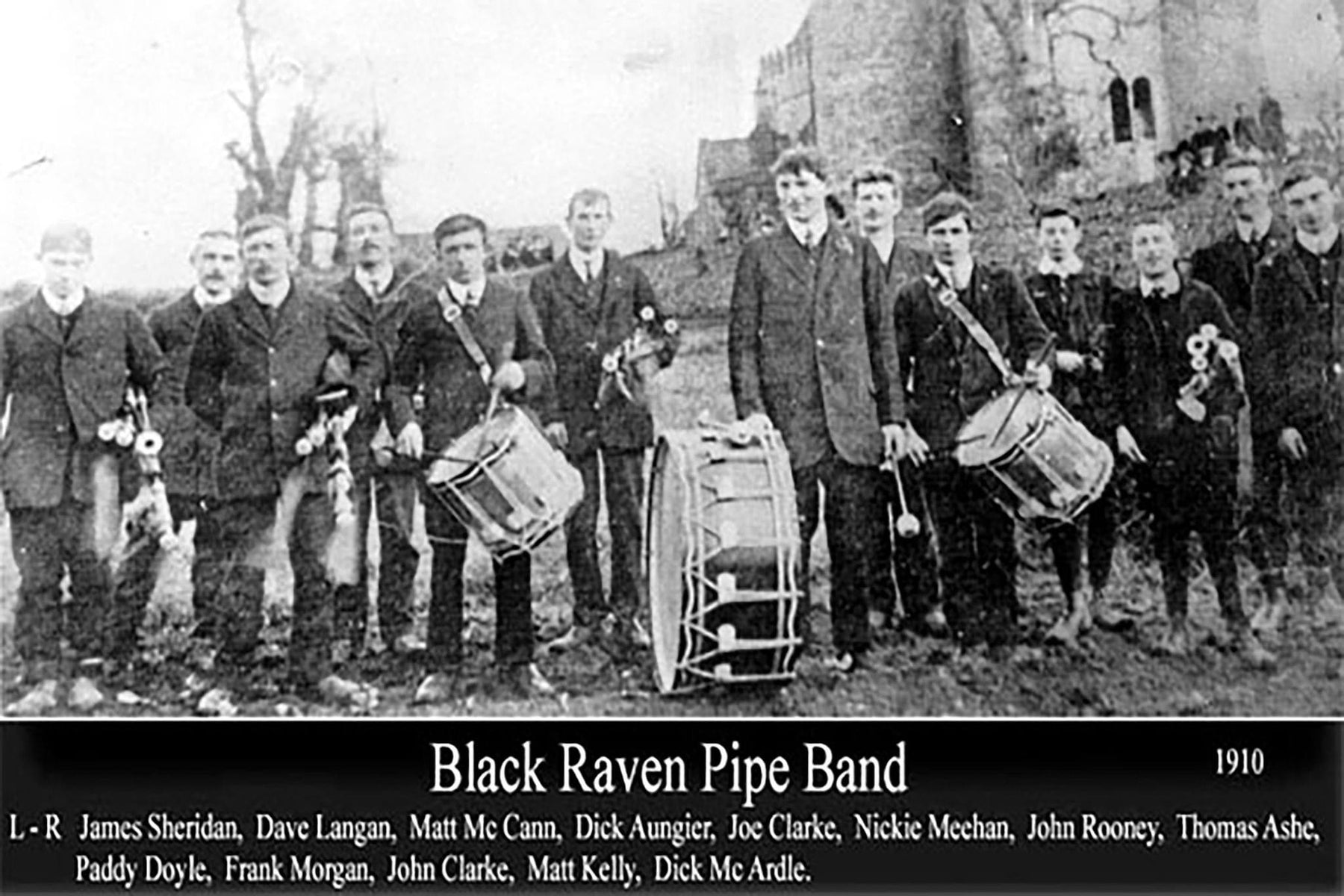
Thomas Ashe - Patriot Piper & the Birth of Black Raven Pipe Band
Thomas Ashe: The Patriot Piper and the Birth of the Black Raven Pipe Band
The story of the Black Raven Pipe Band is closely tied to the rise of Irish national pride in the early 1900s. During this time, people began to take more interest in the Irish language and traditional sports like hurling. One of the key figures in this movement was Thomas Ashe, a schoolmaster and strong supporter of Irish culture.

Thomas Ashe in his uniform, holding his 3 drone bagpipes.
A Chance Encounter and a New Passion
In the early 1900s, the Naomh Mac Cullen Hurling Club, based in Fingal, was one of the most active clubs in promoting Irish sports. During a visit to Dublin, club members saw the Beady Pipers from Armagh parading through the city. Inspired by their colourful uniforms and the warm reception from Dubliners, the idea of forming the Black Raven Pipe Band began to take shape.
Thomas Ashe, then a schoolmaster at Corduff National School and a member of the hurling club, acquired a set of bagpipes from Paddy White, a marathon runner who had won them as a prize. Ashe taught himself to play the bagpipes and, along with John Rooney of Raheny House, decided to start a pipers club in 1910.

Thomas Ashe pictured sitting down in uniform.
Formation of the Band
At first, Ashe and Rooney faced difficulties in gathering funds and support to form a full band. However, with the help of the hurling club and local supporters, they managed to buy additional bagpipes. By 1910, the Black Raven Pipe Band was born, practising in the Library Hall and attracting local talent like Jimmy Sheridan and Dick McArdle.
The band's practices drew attention, and soon more members joined, including Jack McNally, who famously joined after Ashe ordered his "capture" for playing along with the band on his tin whistle. Under Ashe’s leadership, the band grew in skill and number, eventually wearing their first uniforms in the summer of 1911.

Early days of the Black Raven Pipe Band - 1910.
National and Cultural Contributions
The Black Raven Pipe Band quickly became a symbol of Irish cultural pride. They competed in various national competitions, winning the Championship of Ireland in Galway in 1913 and again in Killarney in 1914. Their success and popularity showed their hard work and the strong national pride of the time.
Thomas Ashe's influence went beyond music. Born in Lispole, County Kerry in 1885, Ashe moved to Lusk in 1909, becoming a key figure in the local nationalist movement. He was a founding member of the Irish Volunteers, the Gaelic League, and the Irish Republican Brotherhood. Ashe's leadership during the Easter Rising of 1916, especially at the Battle of Ashbourne, showed his skill and commitment to Ireland's Independence.

Black Raven Pipe Band performing at the square in Lusk, County Dublin sporting their new uniforms (1911-1912).
Legacy and Tragic End
Ashe’s activities after the Rising led to his arrest and imprisonment. In 1917, after being re-arrested for making a political speech, he led a hunger strike in Mountjoy Prison, demanding prisoner-of-war status. Ashe died on 25 September 1917, after being force-fed by prison authorities, becoming a martyr for the Irish nationalist cause.
His death stirred the nationalist movement, and his funeral was a significant moment for the re-organised Irish Volunteers. Michael Collins's short but powerful speech at Ashe’s graveside highlighted the impact of Ashe’s sacrifice.

Thomas Ashe graveside in Glasnevin Cemetery, County Dublin. Notice the bagpipes on the top left.
The Lasting Spirit of the Black Raven Pipe Band
Despite the challenges, including the loss of instruments to the Black and Tans in 1917, the Black Raven Pipe Band continued. They reformed in 1928, and went on to compete and perform across Ireland. Their story is a testament to the hard work and passion of its members, inspired by Thomas Ashe’s legacy.
The Black Raven Pipe Band remains a symbol of Irish cultural pride and national identity. Through their music, they honour the memory of Thomas Ashe, ensuring his contributions to Ireland’s culture and politics are never forgotten.
This blog post celebrates Thomas Ashe's significant influence on Irish culture, highlighting his passion for the bagpipes and his key role in the nationalist movement. His legacy lives on through the music of the Black Raven Pipe Band, a true symbol of Ireland's enduring spirit.

Leave a comment